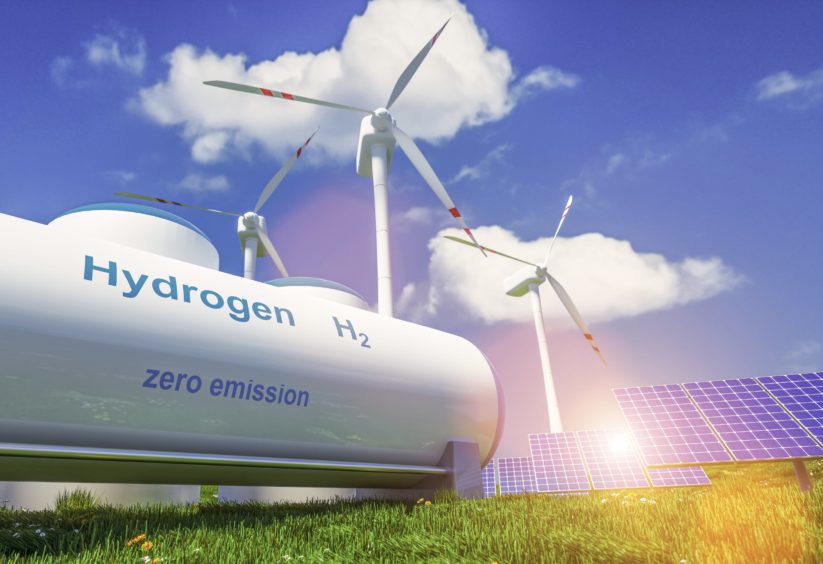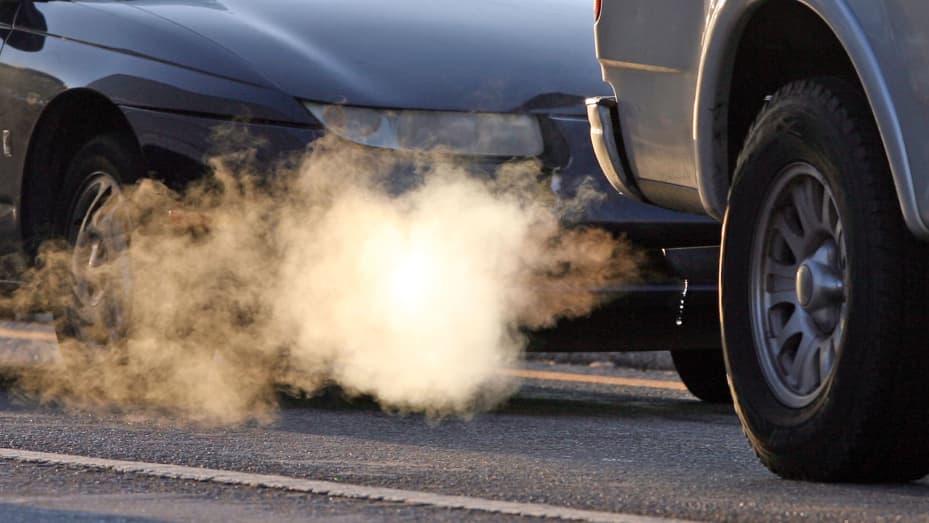 GaijinPot
GaijinPot7 Scariest Japanese Ghosts and Ghouls to Haunt Your Dreams
We hope you don’t find yourself alone with any of these yurei and yokai.
Summer is really hot in Japan. To cool down, people used to tell really scary stories. So be careful walking alone in the wee hours of the night; Japan is full of ghosts, ghouls and other characters lurking in shadowy corners.
Yurei (ghosts of the deceased) and yokai (mythical spirits) have been part of Japanese folklore for centuries—even far back as the 8th century in the Kojiki (古事記, “Records of Ancient Matters”), which is the earliest record of Japanese mythology, chronicling the creation of Japan. Today, they appear in anime, manga, videogames and movies.
Here are seven of our favorite Japanese ghosts and ghouls to send shivers down your spine this summer season.
7. Yuki-onna

Ever seen a beautiful woman with snow-white skin and long black hair wandering through the frigid winter? It may have been a yuki-onna (snow woman). When she walks along a snow-covered terrain, you won’t find any footprints behind her.
The majority of yuki-onna stories originate from Japan’s snowy, northern prefectures like Aomori and Akita in the Tohoku region. In some versions, she is a snow vampire who sucks the souls out of her victims. In other versions, she uses her supernatural beauty to lure weak-willed men into the cold, then leaves them to freeze to death. Savage.
Some say the yuki-onna was a beautiful woman who was murdered in the snow and now does the same to others as an act of revenge.
6. Chochin Obake

This lantern ghost isn’t malicious like other yokai—he’s just a naughty little trickster who enjoys giving humans a scare. The chochin-obake (paper lantern ghost) will flick its large tongue out, roll its eyes and laugh loudly to frighten passers-by. It’s actually kind of cute.
The chochin-obake does not appear in any of Japan’s mythical stories or legends, and only appears in ukiyo-e and kabuki plays. So there is no origin for this particular yokai. One theory is that he was invented simply to scare children. However, tsukumogami (tool spirit), do appear in Japanese mythology. Tsukumogami are tools or objects which become yokai after 100 years.
Thus, a regular lantern may turn into chochin-obake after 100 years of use. This comes from the ancient Shinto religious belief that all objects—even inanimate ones—have a soul. Maybe don’t visit any temples, izakaya or other places likely to have lanterns if you don’t want to run into one. Then again, they might make for a good drinking buddy.
5. Jorogumo
 Photo: A monstrous spider by Kuniyoshi.
Photo: A monstrous spider by Kuniyoshi.Translated to English, jorogumo (絡新婦) means “woman-spider.” However, the kanji can also mean “entangling bride” or “whore spider.” They are cunning and appear as seductive young women. They feed on young men who fall for their tricks—trapping them in their webs and devouring them slowly.
The jorogumo legend is based on the real golden-orb weaver spider, which is found all around Japan. When the spider reaches 400 years old, she will transform into a jorogumo and start preying on humans.
There are several stories based on the jorogumo. In Tonoigusa (Night Watchman’s Storybook), a young warrior encounters a beautiful woman. Realizing she is a yokai, he strikes her with his sword, and she flees to the attic. There, they find a dead spider about 30cm long and surrounded by decaying bodies.
Most versions end with him entangled in spider web and wishing he had kept his mouth shut
In Izu, Joren Falls is home to a jorogumo. The legend says a woodcutter encountered the spider when she tried to drag him behind the waterfall. He escaped, warning the village to stay away, but an outsider met the jorogumo. Surprisingly, she let him live as long as he never spoke of it. Unfortunately, the man was the opposite of coy. The story diverges from there, but most versions end with him entangled in spider web and wishing he had kept his mouth shut.
Worse, jorogumo isn’t the only killer spider in Japan. Tsuchigumo (土蜘蛛, “dirt/earth spider”), are huge wandering spiders with human-like faces that hide in corners and dark spaces. They were likely influenced by the real-life Chinese bird spider and bandits and soldiers that hid in the shadows and preferred to ambush people.
4. Gashadokuro

The poor, unfortunate bones of those who’ve perished on the battlefield turn into gashadokuro (starving skeleton). These yokai form in places where masses of normal skeletons lie, such as in villages after famine or disease has wiped out the population.
Because they died without a proper burial or funeral rites, the souls and bones come together and create one giant skeleton, 15 times the size of an average person. The skeleton specters feed on lone travelers, biting their heads off, feasting on their bones and drinking their blood, Dracula-style. It is like some sort of boss from Castlevania.
You may have seen this yokai in the famous ukiyo-e “Takiyasha the Witch and the Skeleton Spectre” by the famed Kuniyoshi.
3. Yamauba

Are you planning on hiking in the mountains this fall? You may want to rethink that, as that’s where you’ll find the yamauba (mountain witch). These decrepit hags, depicted as old women with messy hair and filthy kimonos, are known to offer shelter to weary travelers only to kill them once they fall asleep.
The yamauba were once regular women but fled to the forest after being accused of crimes. Another theory is they were victims of ubasute (姥捨て), literally “abandoning an old woman.” During hard times such as famine, a family would lead their elderly into the forest to die. Here, they would grow angry and resentful, becoming cannibalistic and practicing black magic.
However, in some stories, they are benevolent. For example, a yamauba might give a kind stranger treasure or good fortune. In Aichi, yamauba are seen as protective gods.
2. Kappa

This small human-like creature has a shell like a turtle, green scaly skin, and a plate on its head that must be filled with water at all times to stay alive. They live in Japan’s rivers, lakes and other waterways.
In Shintoism, kappa (river-child) are respected as gods of water and statues of them can sometimes be seen at shrines around Japan. Kappa quirks include having an affinity for cucumbers (hence the kappa-maki) and never breaking a promise.
In the urban legend version, a more menacing kappa loves to pull lost children and animals into the water to drown and eat. They still like to eat cucumbers but also raw human intestines.
1. Kuchisake-onna
 Photo: iStock
Photo: iStockKuchisake-onna is a malicious, contemporary yurei, whose name literally translates to “slit-mouthed woman.” Legend says when she was alive, her husband punished her for her acts of adultery by slicing her mouth open from ear to ear.
Thanks to that dick, this ghost appears as a beautiful young woman wearing a surgical mask, holding a sharp weapon like a pair of scissors. She approaches people at night and asks them a question with sinister intentions.
An encounter with a kuchisake onna is a lose-lose situation, always resulting in death.
“Watashi, kirei?” or “Am I beautiful?” she coos. If you answer no, she will kill you instantly. If you say yes, she removes the surgical mask revealing her gruesome mouth. With a big smile, exposing sharp teeth, she’ll ask, “how about now?” An answer of “no” will result in you being dismembered by the ghost. Say yes, and she will make you as “beautiful” as she is by slicing your own mouth from ear to ear. An encounter with a Kuchisake-onna is a lose-lose situation, always resulting in death.
The murderous woman briefly appeared in the 1984 Studio Ghibli movie Pom Poko and several Japanese horror movies have been made with her story as the premise, including the 2007 low-budget horror flick Carved: The Slit-Mouthed Woman.
 Photo: GaijinPot
Photo: GaijinPot7 Spooky Japanese Superstitions and Their Origins
Familiarize yourself with these eerie Japanese superstitions to prevent yourself from unknowingly summoning spirits or bad luck this summer!
By Erika Van 't Veld 6 min read
Summertime in Japan means matsuri (festivals), hanabi (fireworks) and kakigori (shaved ice), but it’s also the season of wandering ghosts and vengeful spirits. The frightful visits are thanks to Obon, the Buddhist festival that honors the spirits of one’s departed ancestors by inviting them back to the human world.
While spooky stuff is reserved for Halloween in the US, Summer in Japan is the traditional time when friends tell scary stories, haunted houses are erected, and classic Japanese horror movies are streamed on TV.
In the spirit of giving yourself goosebumps, here are seven spooky Japanese superstitions to be aware of this summer.
7. Swimming during Obon will get you spirited away
 Photo: iStock: D-Keine
Photo: iStock: D-KeineFlowing water is known as a passageway for spirits coming back to the human world during Obon. This Japanese superstition warns against swimming because the spirits flowing through the water will grab you in the water and take you with them to the afterlife.
This warning could stem from disciplining children who interfered with the safe passage of spirits or obstructing the toro nagashi (lanterns on the river). In this Obon custom, families float lanterns down a river to represent their ancestors transitioning back to the spirit world.
Interestingly, a science-backed explanation for this superstition also exists. During the summer months, Japan experiences its typhoon season, making swimming in the ocean very dangerous. So whether swimmers get taken away by spirits or the tide, be careful about swimming in Japan during the summer!
6. Whistling at night summons snakes
 Photo: iStock: Kazzpix
Photo: iStock: KazzpixWalking home from a fireworks festival in high spirits might prompt some cheerful whistling at night, but you might reconsider. According to this old Japanese superstition, whistling at night summons “snakes,” which could refer to supernatural monsters, criminals or actual snakes. None of which sounds like something you want to bump into down a dark alley.
This superstition comes all the way from feudal times when outlaws and bandits prowled the roads. These criminals would whistle to each other to communicate at night, and it didn’t take long for the idea that whistling invited other unsavory characters to spread.
5. Hanging your laundry at night invites spirits
 Photo: iStock: Domonite
Photo: iStock: DomoniteSummer days in Japan can be rainy and humid, so why not hang your wet laundry out at night to dry? Bad idea. Especially during Obon when the world is full of wandering spirits. Hanging clothes at night gives these spirits a familiar object to “cling to.” It might also scare your neighbors to bits if they see a white nightgown blowing in the moonlight!
This belief started back when kimonos were handed down generations after the previous owner passed on, and their spirit was thought to latch on to the connection to their former selves.
4. Cutting your nails at night leads to an early death
 Photo: iStock: AntonioGuillem
Photo: iStock: AntonioGuillemThis superstition originated before nail clippers and electricity indoors were invented, and people used knives to trim their nails by candlelight. Slightly reckless, to say the least. One slip-up and an infection could have actually led to a person’s death.
Other iterations of this superstition say if you cut your nails at night, you won’t be there for your parents on their deathbed—because you died before them! Which makes sense, I guess.
It could also derive from another Japanese superstition. In the past, cutting tools, even the lowly nail clipper, were believed to have spiritual power or reiryoku in Japanese. So cutting anything at night, when the spirits are particularly active, was considered a bad idea.
3. Stepping on the border of tatami mats
 Photo: iStock: Bee32
Photo: iStock: Bee32This is sort of like the Japanese version of “step on a crack, break your mother’s back.” Tatami mats are traditional flooring you find in Japanese homes. They are made using soft rush and materials such as rice straw or compressed wood chips.
The borders are typically edged with decorative cloth, and some families put their family crest on the borders. Hence, stepping on the cloth borders is like stepping on your parents. Worse, it’s like stepping on your ancestors, who we’ve already established like to stick around and are quick to anger.
So next time you are visiting your Japanese in-laws, maybe watch your step?
2. Falling from a persimmon tree
 Photo: iStock: Electravk
Photo: iStock: ElectravkMany older adults in Japan who climbed persimmon trees may remember being scolded by their grandparents. “If you fall, you’ll die in three years,” they’d shout. Or some other curse to bewilder and scare the pants off them. But where does this superstition come from?
Persimmon trees have a deep connection to life and death in Japanese folklore and religion. For example, it was customary in Nara Prefecture to plant a persimmon tree to mark gravesites or the tree’s wood as fuel for cremations. In Nagano Prefecture, spirits are believed to be found under persimmon trees, and souls will cling to persimmon trees near their family homes.
They’re also associated with good luck and longevity. Many families will hang a string of hoshigaki (dried persimmons) in their homes through New Year’s Eve. However, some also believed that eating a “strange” persimmon fruit gave birth to a disabled child.
However, while there is already a lot of superstition surrounding persimmon trees, the “death in three years” story was likely invented just to keep kids from falling out of trees. Persimmon trees are known for having fragile branches. One too many kids coming home with scraped knees and broken bones likely started this tall tale.
1. Sleeping with your head pointed north
 Photo: iStock: Demaerre
Photo: iStock: DemaerreTraditional Japanese Buddhist funeral customs position a body so that the deceased’s head points north. North is not only the direction spirits travel in the afterlife, but it is also the direction Buddha laid his head on his deathbed.
Hence, to mimic the position of corpses by sleeping with your (still living) head pointing north may welcome death to your home or summon bad luck. There is even a term for the superstition—kita mukura, literally “north pillow.”
It is similar to the taboo of sticking chopsticks upright into your rice. This stems from the rice bowl with chopsticks called makura meshi, placed next to the body during a funeral. For this same reason, it’s taboo to wear a kimono with the right side overlapping the left side. Only corpses wear their kimonos right-over-left, so if you’re a living person, be sure to wear a kimono left-over-right!
We hope you have a happy haunted summer in Japan, filled with goosebumps and scares (if that’s your thing). Suppose you want to take a stab at provoking the spirits, whistle and hang your laundry out at night. Please note we are not responsible if you get spirited away.





